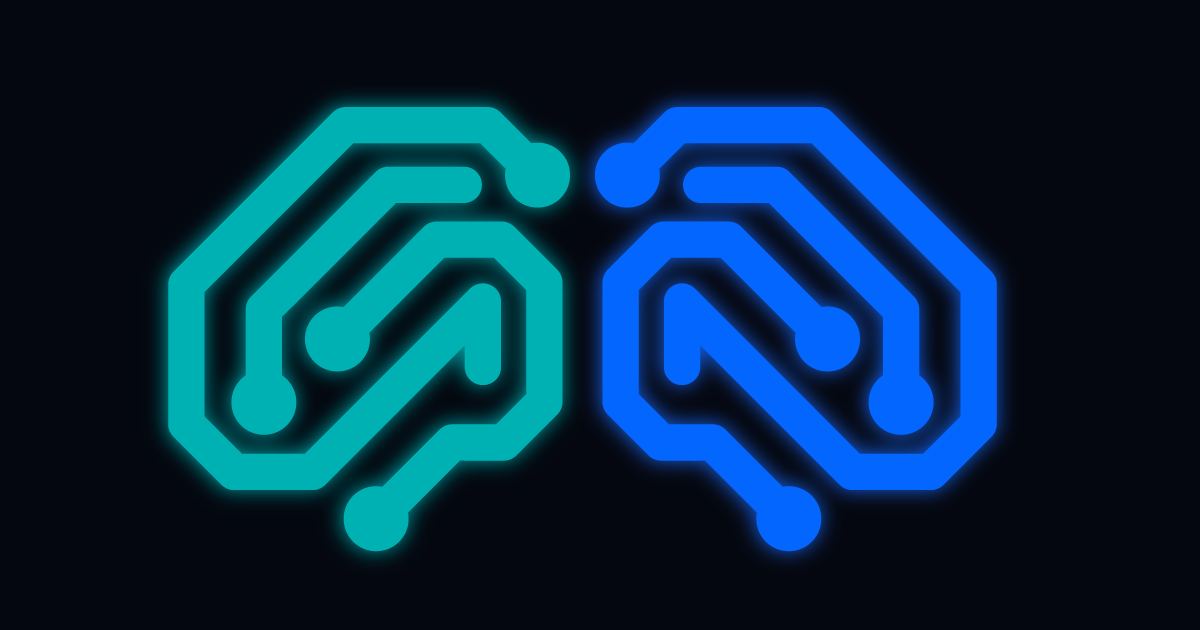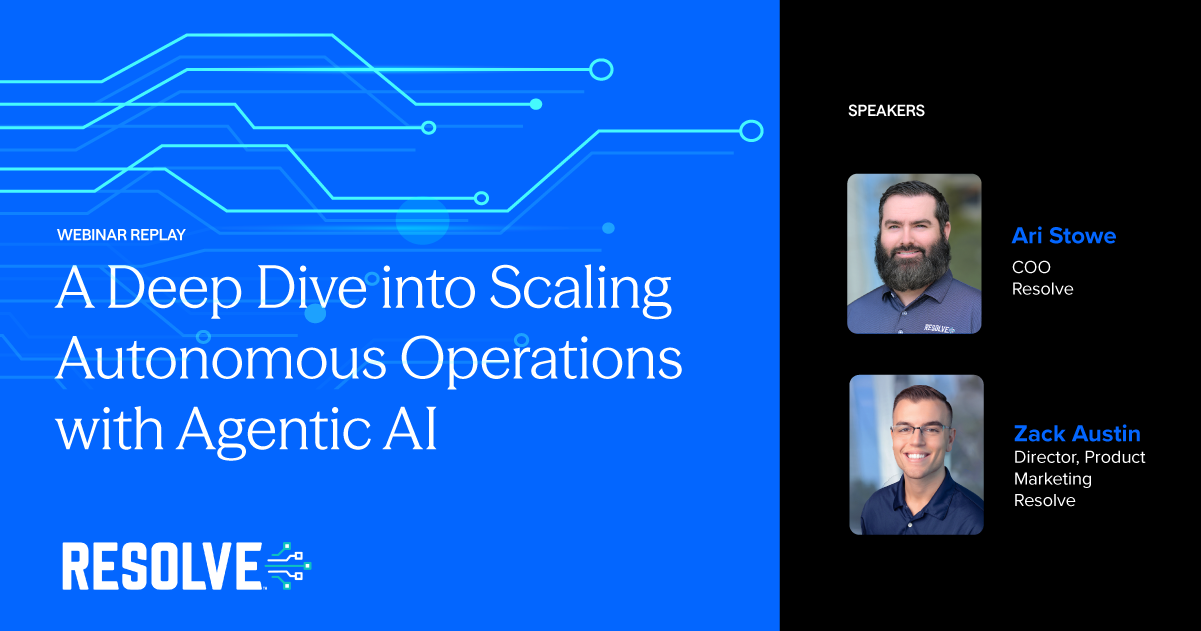
Every AI Agent Needs a Sidekick: An AI Orchestration Platform
Subscribe to receive the latest content and invites to your inbox.
Agentic AI has sparked a ton of excitement in IT. These intelligent agents can analyze signals, interpret requests, and recommend actions with surprising accuracy. But left on their own, they struggle to translate those insights into reliable execution. The end result is a fragmented picture of great thinking... but limited doing.
This is why orchestration matters. An AI orchestration platform provides the action controller that ensures agents don’t just suggest solutions, but actually carry them out across complex, interdependent systems.
Gartner notes that while AI agents represent a leap forward from deterministic bots, their effectiveness depends on being paired with orchestration capable of spanning multiple domains. Resolve’s own orchestration layer demonstrates how this connection turns agentic AI into enterprise-grade execution. Let’s drill down further!
IT Operations: One Big Choreography
IT environments are rarely single-threaded. A seemingly small fix, like adjusting access privileges or restarting a service, can ripple across infrastructure, user experience, and much more. The challenge for operations teams is ensuring that intelligent automation doesn’t take shortcuts that create new risks.
An AI orchestration platform solves for this problem by embedding governance, policy checks, and stepwise execution into every process. It acts as the conductor by ensuring that agents follow the right steps, route through the proper approvals, and integrate data from multiple systems.
Enterprises using Resolve’s platform have already seen resolution times cut by up to 70% and ITSM costs reduced by up to 40% through this type of automation. This underscores that orchestration is the cutting edge of modern IT.
Guardrails, Not Guesswork
It’s tempting to believe that AI agents can simply act on their own insights, but enterprise IT doesn’t quite work that way. Without orchestration, agents risk triggering fragmented or redundant actions that fail to account for dependencies. The bigger and more hybrid the environment, the greater the potential for missteps.
The action controller provides the guardrails. It gives agents a structured framework that balances autonomy with oversight, ensuring every move is consistent, auditable, and aligned with enterprise policy. Gartner has warned of “agent washing” (i.e., vendors relabeling simple bots as AI agents) and stresses that true agentic automation requires cross-system orchestration.
Building Maturity Step by Step
Most IT organizations aren’t trying to leap straight to fully autonomous operations. They’re building maturity gradually, moving from reactive firefighting toward proactive and predictive models. And that’s okay! Orchestration is the mechanism that makes progress possible at each stage.
In early IT maturity stages, orchestration standardizes repetitive workflows and gives teams a foundation to scale. As maturity grows, it connects event-driven automation across multiple systems, reducing human bottlenecks. At full speed, it enables agents to detect, decide, and resolve issues autonomously in real time.
Resolve defines these stages as reactive, tactical, integrated, and autonomous, and orchestration is what propels organizations along that curve. Gartner’s emerging BOAT category (Business Orchestration and Automation Tools) echoes this, calling orchestration platforms essential to consolidating scattered automation efforts into a unified enterprise layer.
The Cost of Fragmentation
Without orchestration, agentic AI initiatives risk fragmenting into a patchwork of disconnected experiments. One team uses an agent to classify alerts, another builds a chatbot for access requests, while a third automates change workflows. Each may show promise, but the lack of a unifying action controller prevents these efforts from scaling or delivering enterprise-wide value.
The result is duplication, inconsistent processes, and missed opportunities. An AI orchestration platform prevents this fragmentation by unifying disparate automation under a common operating model. Resolve has helped enterprises achieve that consolidation, with an enterprise saving more than $1 million annually by orchestrating automation across its hybrid IT environment.
Orchestration in Practice
At Resolve, orchestration is a daily reality for operations teams, not some abstract, far-off fantasy. Our platform acts as the action controller for AI agents like RITA, which deflects and resolves common service desk requests, and Jarvis, which both accelerates and democratizes workflow creation. When taken in tandem with a single ecosystem layer that enmeshes multiple agents, this paradigm illustrates how intelligence and orchestration pair to deliver impact.
For IT operations leaders, this translates into tangible benefits: cross-domain processes automated end to end, governance and compliance embedded into workflows, and automation scaled from isolated wins to enterprise-wide adoption. These benefits empower human agents to focus on the strategic governance that makes a true difference for employees and, by extension, customers.
The Zero Ticket Operating Model for IT
Agentic AI represents the thinking power IT has been waiting for. Orchestration provides the muscle to act on those insights. Together, they define the next-generation operating model: intelligent, event-driven, and increasingly autonomous.
Organizations that embrace this pairing are already seeing transformative results, like faster resolution, lower costs, higher uptime, and more strategic bandwidth for their teams. As a bonus, Gartner projects that agentic AI combined with orchestration will reshape enterprise operations over the next five years.
The direction is clear: intelligence alone won’t get IT to its goals. Pairing it with orchestration will.
For IT operations leaders, the message is simple. Don’t stop at deploying agents. Give them a sidekick that knows the dance steps. That’s how you turn promise into performance.
→ Request a Demo
→ Read The Zero Ticket Future Manifesto






